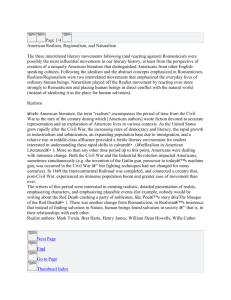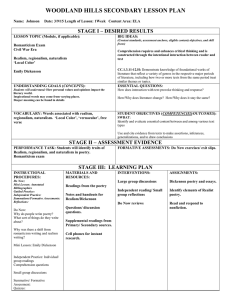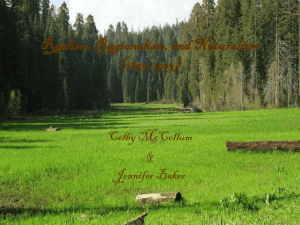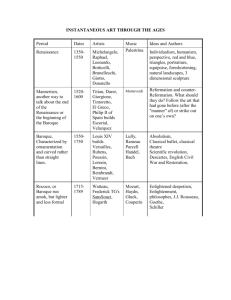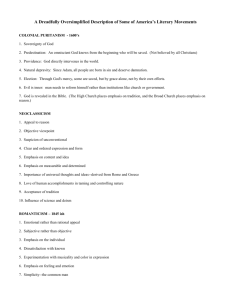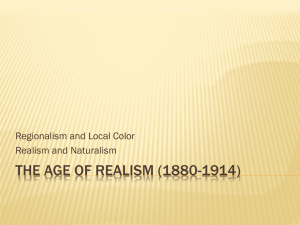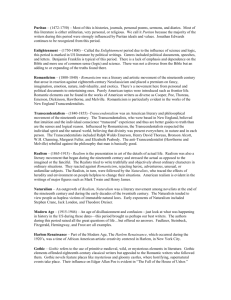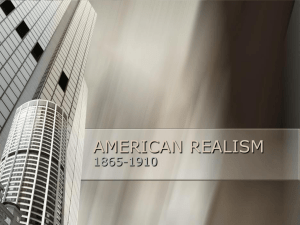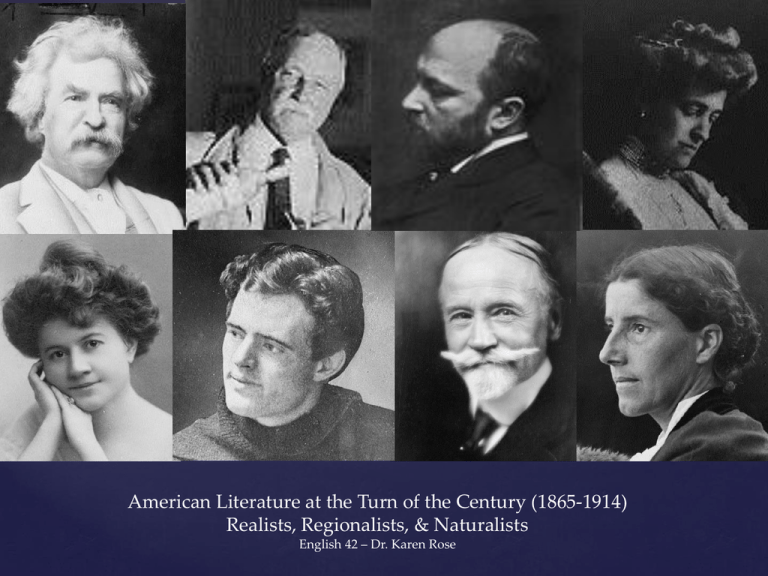
{
American Literature at the Turn of the Century (1865-1914)
Realists, Regionalists, & Naturalists
English 42 – Dr. Karen Rose
Historical Context
Romanticism was one of the dominant modes of
artistic expression in the 19th century.
Romanticism emphasizes the imagination and emotions over intellect and
reason. Generally speaking, Romanticism might be said to involve a belief in
the innate goodness of man, individualism, and idealism.
Above all, Romanticism conveys an innocent and dreamy sense of wonder,
faith in nature, belief in goodness and the potentiality of things.
Some say Romanticism presents
life as we wish it would be.
As a result of the Civil War (1861-1865) , technological and industrial
developments, America seemed to have lost its innocence.
Writers felt that the optimistic spirit of Romanticism could no longer
convey the American experience.
Romanticism gave way to a new literary movement:
Realism.
Literary works written in the mode of Realism evoke the sense
that its characters might, in fact, exist and that such things might
actually happen.
In other words, writers who followed the conventions of Realism
attempted to portray life as accurately as possible.
REALISM
Realism is nothing more and nothing
less than the truthful treatment of
material.
– William Dean Howells
Several of the authors we are studying this semester are highly regarded Realists:
• Mark Twain (1835-1910)
• Charles Chesnutt (1858-1932)
• Mary Wilkins Freeman (1852-1930)
• Charlotte Perkins Gilman (1860-1935)
Their works are characterized by objectivity of reporting, the use of
authentic American speech and dialogue, and a fidelity to the material
world. They resisted the emotional extravagance and fanciful settings that
had characterized Romantic fiction and, instead, focused on unrefined and
“ugly” subjects.
Under the umbrella of Realism are included
Regionalism and Naturalism.
Realism
Regionalism
Naturalism
Regionalism
By the end of the century, almost every region of the country had its “local
colorist.” These writers sought to immortalize the distinctive features of
their regions: characters, dialects, customs, topography, history, etc.
Twain, Wilkins Freeman, and Chesnutt are highly regarded Regionalists.
For example, Wilkins Freeman wrote of economically impoverished rural life in New
England, and Chesnutt and Twain wrote of the pre-Civil War South.
Regionalism
Regionalism flourished after the Civil War as Americans started to
conceive of themselves as part of a single unified nation, and curiosity
grew about disparate regions of the country.
Many scholars believe that Regionalism was an act of nostalgia and
conservation in response to rapid postwar industrialization and the
standardization of American culture, the result of mass-produced
consumer goods, the mail-order business, periodicals, and newspapers).
Naturalism
Writers who embraced Naturalism as their literary mode were greatly influenced
by Charles Darwin’s theory of evolution (1859).
Naturalists believed that a human is merely a higher-order animal whose character
and behavior are determined by two forces: 1) heredity 2) environment.
Naturalists emphasize the manner in which an individual’s destiny is determined
by compulsive biological instincts – hunger, sex drive, fear, etc. – and the social and
economic forces in the family, class, environment into which that person is born.
Naturalism
This is a pessimistic way to view humanity because the individual is “trapped”
by the limitations of his/her biology and environment.
As you can imagine, given their dark view of human nature and possibility, the
ending of literary works written in the mode of Naturalism is usually tragic.
Some of the authors we are reading who are regarded as Naturalists are:
• Theodore Dreiser
• Jack London
• Kate Chopin
Sigmund Freud “Biology is destiny.”

